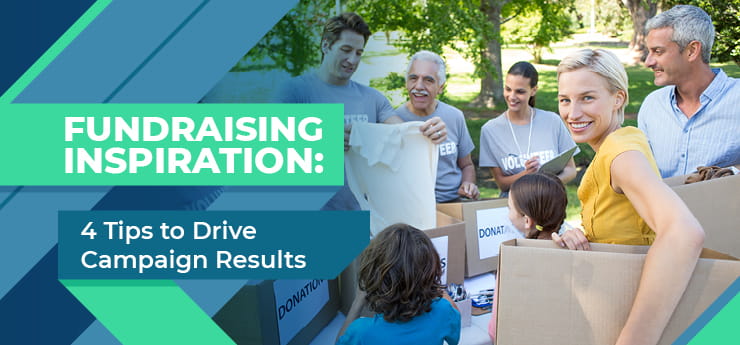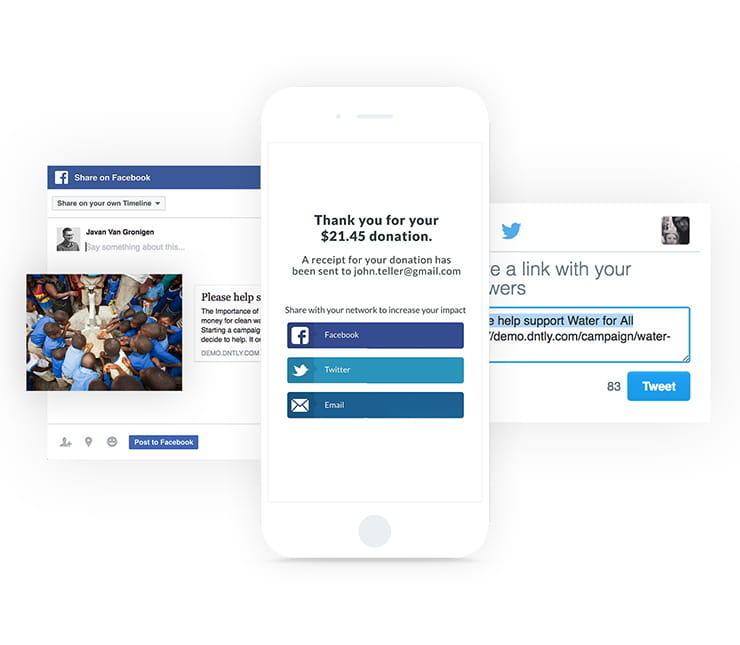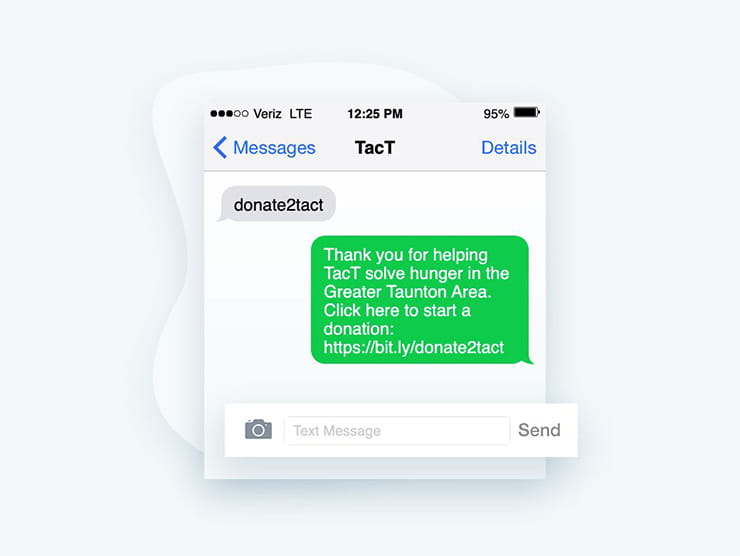Guest Post from Andrew Berry, head of marketing and customer success for Donately
As fundraisers, we’re always looking for ways to raise more money and grow impact. 2020 has thrown countless obstacles in our way, and charitable organizations have been forced to go the extra mile to stand out in a chaotic year of public health, political, and economic turbulence.

Just because excessive hand washing, working from home, and video hangouts are the current norms doesn’t mean you have to sacrifice donor engagement. It simply means you have to get creative to overcome these barriers. In our current COVID-ridden world, that means heavily focusing on digital strategies and online donation opportunities.
Luckily, there are several strategies that any nonprofit fundraiser can implement — even if you’re not all that tech-savvy. This article will explore a handful of opportunities your team might be overlooking, such as:
- Focusing on social media.
- Trying out peer-to-peer fundraising.
- Ensuring your fundraisers are mobile-friendly.
- Focusing on post-campaign donor cultivation.
Even after we head into 2021, your organization will still need to adhere to social distancing and prioritize your donors’ and staff members’ health. The uncertain landscape created by the COVID-19 pandemic is sticking around for the near future, and it’s important to shift your focus to digital engagement to account for this.
Ready to explore how your nonprofit can make the most of digital fundraising? Let’s get started.
1. Focus on social media.
Social media is a vital part of any modern communications strategy. Social media advocacy tools for nonprofits such as Juicer allows you to connect with new prospects while also engaging current supporters. You can easily update followers on organizational progress, drive traffic to your campaigns, and increase brand awareness. Best of all, these platforms are free to use, which is especially useful for nonprofits that have tight budgets.
Social media makes fundraising and developing donor relationships easier than ever before. To take advantage of the vast array of benefits, here are a few elements you’ll want to consider for your social media strategy:
- Interact with supporters. The great thing about social media is that it opens the door for two-way communication. Respond to your followers in the comment section of your posts. Then, encourage donors to share your posts with campaign announcements. Even if they’re unable to donate, they’ll still feel like they’ve contributed to your campaign by encouraging their personal networks to give.
- Create a unique, easy-to-remember hashtag. When carefully chosen, hashtags do a fantastic job of encompassing your message. Juicer’s social media fundraising guide suggests that you choose one that’s catchy and easy to remember. This will encourage supporters to use it when sharing your fundraising campaign online.
- Add a social media feed to your site. Intertwining your outreach platforms (also called omnichannel marketing) allows you to increase the visibility of your messages and drive users to other points of engagement. Social media feeds are a great way to do this! Curate all your social media accounts into one simple feed on your website, so people browsing your website can easily navigate to your pages and follow your accounts.

Nailing down your social media strategy will work wonders for campaign participation. Best of all, there are tools out there to help with curating content, tracking metrics, and keeping up with social engagement — which will ultimately take a great deal of legwork off your team’s plate.
Related Reading: Tips for successful social media political campaign
2. Try out peer-to-peer fundraising.
If you want to further harness the power of social media, try out peer-to-peer fundraising. This fundraiser depends heavily on social media outreach and encourages donors to take an active role in your fundraising. Not only will this boost revenue, but it’s also a proven supporter engagement method since they’ll be taking the lead in outreach.
Here’s how Donately’s peer-to-peer fundraising guide breaks down the process:
- Through a peer-to-peer platform, you develop your main campaign page that exemplifies your brand and enables you to collect donations.
- Then, you recruit passionate volunteers to personalize their own individual fundraising pages with their connections to your cause.
- Volunteers share their campaign pages with their friends and families on social media, urging them to donate to your mission.
- Your team and volunteer fundraisers take a tag-team approach to marketing by providing timely updates and proactively sharing campaign information.
While these campaigns are highly cost-effective and fairly straightforward, pulling one off takes a lot of effort from everyone involved. You’ll need to spend plenty of time finding the right participants and thoroughly training them.
Be sure to invite participants to attend online training sessions, and then share templates for them to customize when sharing your campaign. That way, your nonprofit gets all the essential details in there, while participants won’t have to stress about creating a standout social media post from scratch.
Keep in mind that most large-scale social fundraisers end with some kind of big event that everyone looks forward to attending, like a walkathon or celebratory dinner. While this may be challenging given our current socially-distanced reality, a virtual event (like a digital gala) is certainly worth considering.
3. Ensure your fundraisers are mobile-friendly.
Not only is today’s fundraising landscape rapidly going digital, but it’s also going mobile. In fact, mobile giving is up by an astounding 50%, while the number of donations completed through desktop actually decreased by 9% over the past year, according to this statistics page.
That means a large pool of prospects are actively using smartphones, and if your fundraising strategy doesn’t account for this, you’re likely missing out on some much-needed revenue. Take advantage of mobile giving with methods like:
- A mobile-responsive donation page. First and foremost, a mobile-responsive donation page is a staple of modern nonprofit fundraising. The elements (e.g. fields and buttons) should automatically adjust to fit the screen size without losing functionality, so your donors can give from their favorite devices the second that motivation strikes. No need to wait until they have access to a computer.
- Text-to-donate. This fundraising method, often called text-to-give, allows your donors to give directly from their smartphones. Select a text-to-donate platform and receive a unique phone number and keyword for your cause. Share this information with your donors, who then text the keyword to the designated phone number. They’ll receive a link that reroutes them to your mobile-friendly giving page where they can safely submit their donation. See how the process looks from the organization’s perspective below.

Thanks to today’s technology, giving has never been more convenient. Incorporating mobile-friendly tools into your campaigns will open up your fundraisers to donors everywhere, whether they’re at home or on the move. Regardless if you’re looking for a short-term solution during COVID-19 or are seeking to permanently add these options to your fundraising repertoire, mobile giving will help your fundraising strategy reach new heights.
4. Focus on post-campaign donor cultivation.
There’s no doubt that donor acquisition is a crucial piece of the fundraising puzzle, but the relationship doesn’t end once the prospect hits the “donate” button. The most impactful payoff of a successful fundraiser is securing continued support. Nonprofits that don’t have a donor cultivation plan in place potentially miss out on a lifetime of support.
Plus, you probably already know that it’s more cost-efficient to retain existing donors than to acquire new ones. Let’s be honest, you probably have a tighter budget to work with this year, so in 2021 especially, your organization should emphasize retention over acquisition.
As you wrap up your next campaign, here are three opportunities for initiating lasting partnerships:
- Post-donation follow-up. Saying thank you is always the first step you should take to initiate donor relationships. Especially if you expect a large influx of donations, it’s important that your donation platform enables you to personalize and automate thank-you emails in addition to automatic donation receipts.
- Recurring donations. According to 360MatchPro’s fundraising statistics page, recurring donors give 42% more per year than one-time donors. Your campaign is the perfect opportunity to encourage recurring gifts so that you can create a steady stream of revenue and secure ongoing support from your new donors.
- Updates. When individuals give their hard-earned money to your cause, it’s important to share how their donations are being used. For instance, if the funds were directed to a specific program, reach out with programmatic updates. Sharing impact will convey the value of each individual’s contributions, encouraging them to stick around.
Focus heavily on donor retention after your campaign wraps up, and you’ll be well on your way to securing the coveted “golden” donation (AKA a second donation). After all, individuals who give a second time are much more likely to continue giving to your organization.
For the nonprofit sector, digital fundraising is here for the long-haul. While COVID-19 accelerated the transition, this was the trend even before the pandemic hit. Digital-first strategies will continue to take center stage in 2021, and if you haven’t already accounted for this, it’s time to readjust your approach to fundraising.
To recap, start off by modernizing your communications with social media and exploring social fundraisers like peer-to-peer campaigns. Don’t forget to also try out mobile-friendly tactics like text-to-donate. Most importantly, make a plan for retaining the donors you acquire through your campaigns. A forward-thinking approach means you can secure givers for a lifetime. After all, now is not the time to waste your resources.
Now that you’re backed with proven digital strategies, get out there and start fundraising!
Author Bio
Andrew Berry is the head of marketing and customer success for Donately. After getting involved with nonprofits at a young age, he discovered a passion for helping the organizations that are making the world a better place. Knowing how vital online fundraising has become, his goal is to help nonprofits raise more money online each year! In his spare time, you will find him cooking up dinner, playing with his dog or cheering on Boston sports teams.

